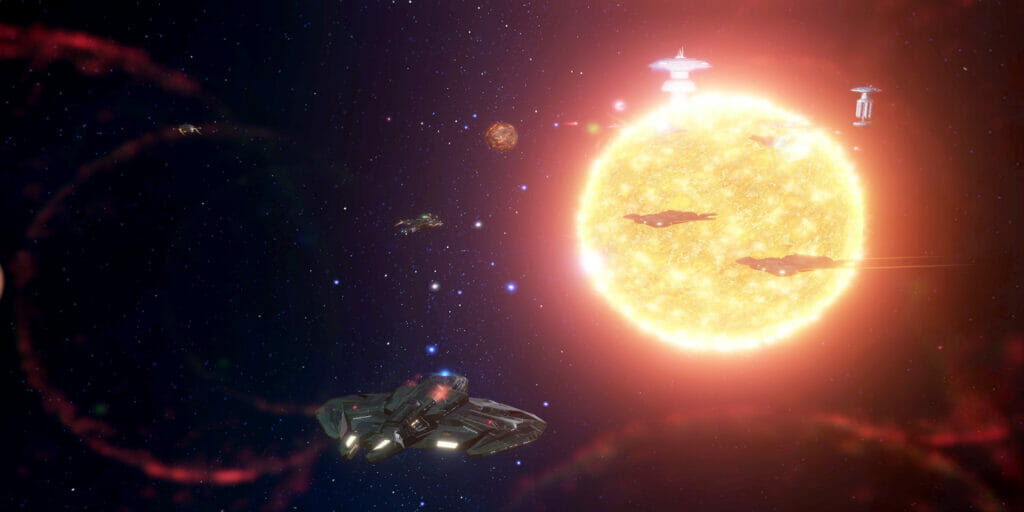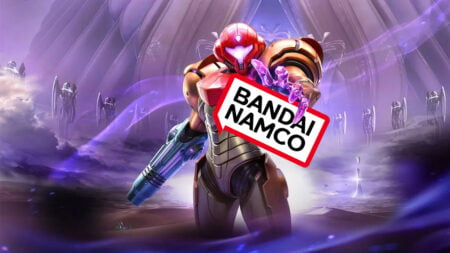Skip To...
When it comes to space exploration, many new and old games have always looked for ways to perfect it. Some include RPG systems to make the journey more personal. Others give you a huge sandbox so you can create your adventure. But very few games manage to make you feel like the colonizer and leader of an empire like Star Trek: Infinite. With the exact DNA of Stellaris, Nimble Giant Entertainment has managed to fuse the 4X strategy genre with one of the most beloved space franchises ever. The result? It is an unprecedented adventure for genre fans, albeit with minor flaws, which I will discuss in my Star Trek: Infinite game review.
Star Trek: Infinite Review: To Infinity and Beyond
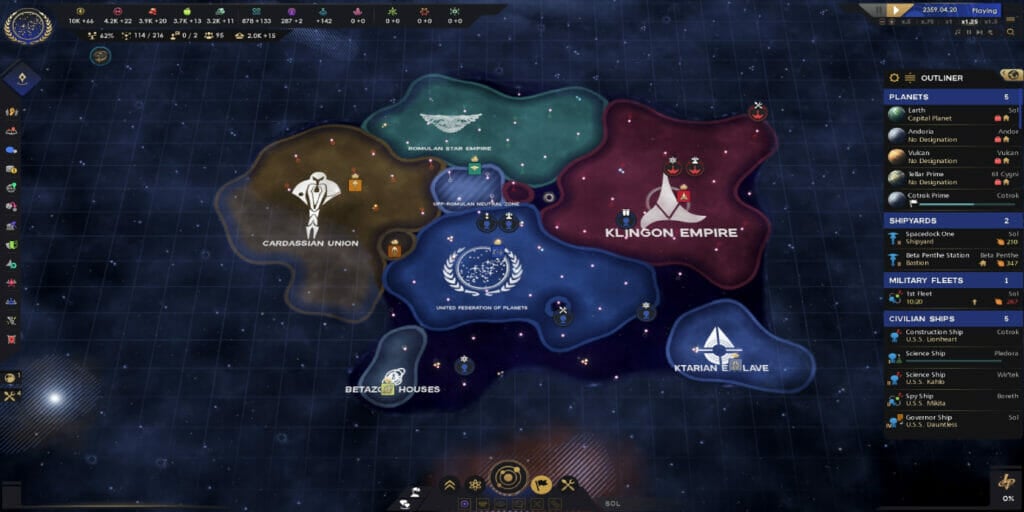
Regarding strategy games, one word is always used or expected: grand. The fact of having a 4X game implies that the player should feel like a leader of an empire that can grow as far as one wants. Fortunately, Star Trek: Infinite achieves that and more. Best of all, we don’t have something generic or a bit memorable; this time, we have Spock, Picard, and many more. Add to this canonical franchise events, and you have a recipe for success. Mind you, some things may drive many Star Trek fans away because, like Stellaris, the game is not very beginner-friendly.
Story: A Story Among the Stars
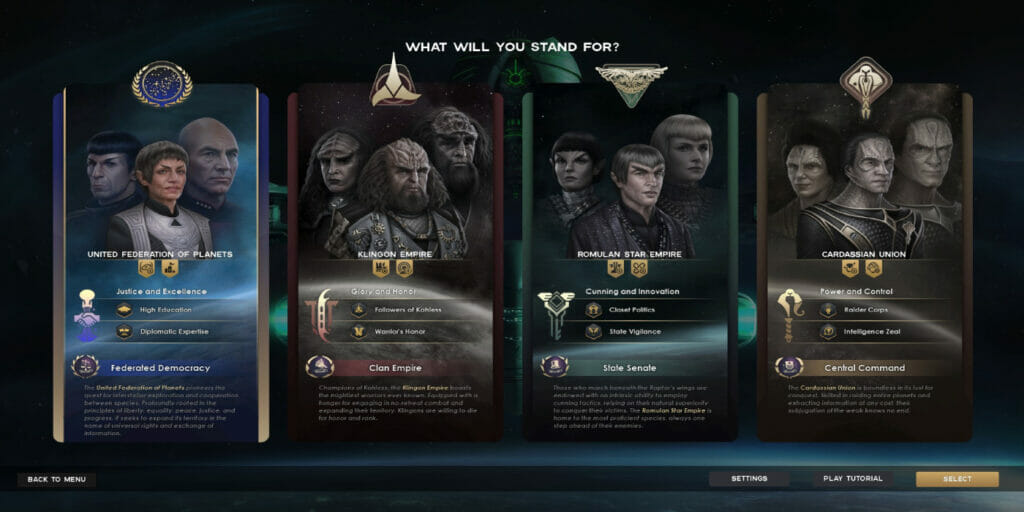
Like all games of this genre, the story is created by the player. When you start your campaign, you can choose between one of the 4 major factions: The United Federation of Planets, the Klingon Empire, the Romulan Star Empire, and the Cardassian Union. It is important to mention this because, despite the freedom in creating your story, each faction has unique moments that change the course of your narrative.
During my 20+ hours of play, my favorite factions were the UFP and the Cardassian Union. I will focus on the first one as it was the one that led me to my first victory after many attempts. While this was great, the most endearing part was to see my empire grow after each decision.
Related:
Top 10 Most Anticipated Games Coming in October 2023
Initially, I decided to focus on creating the best fleet in the galaxy, but I always stayed on the defensive. I helped every faction with diplomatic issues and even supported the independence of certain systems. Of course, everything was going well until one of my espionage missions failed, and the Klingon Empire attacked me mercilessly. My greatest achievement was to come out of this war alive, which, after affecting all my resources, saw my empire rise from the ashes of a needless conflict to position me as the supreme leader of the galaxy. This was my story, and it will be different for everyone.
Fans of the Star Trek franchise will find many events featured in the movies and the series. While those of us who have seen this series know the outcome, trying something different from what the characters did offers a sea of opportunity. This is a plus for the game and something I loved in my game review of Star Trek: Infinite because I could change the course of things I’ve seen before. Mind you, fans of the series won’t hesitate twice to yell, “Shut up, Wesley!” so as not to break from canon.
Gameplay: Space’s The Limit
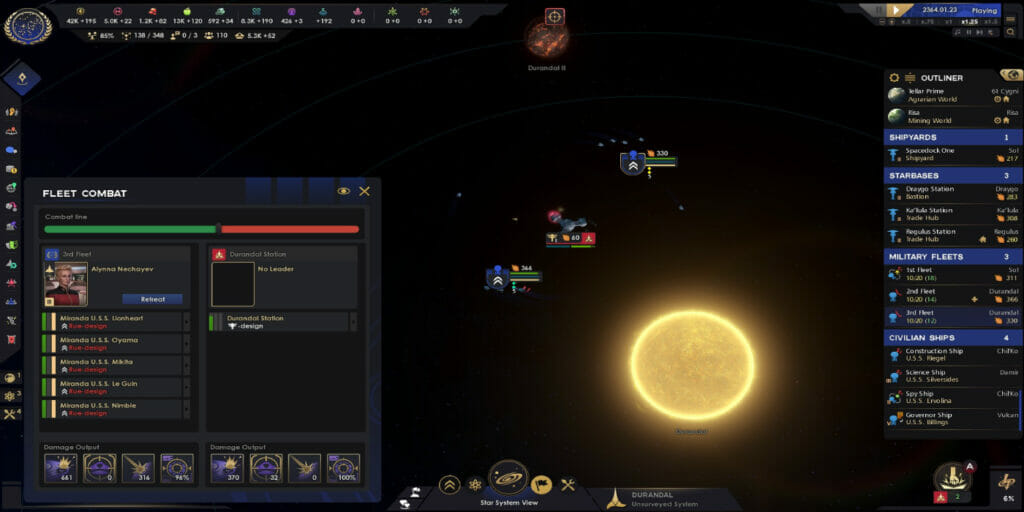
The best of the best of Star Trek: Infinite is, without a doubt, its gameplay. Before talking about the parts I liked, I must say that the game is almost a copy of Stellaris, and I don’t mean that badly. Stellaris is a game that, despite its flaws, established itself as the standard for 4X space strategy games, and any company trying to make a product of this type should use Stellaris as an example.
Although many things are too similar to Stellaris, others have been changed to be simplified or, oddly enough, more complicated. Let’s talk about the former. Exploring space is much easier and cleaner now that the UI has been improved and modernized, something that will appeal genre veterans and make newcomers less confused.
Related:
5 Games Like Cyberpunk 2077 That Could Benefit From a Reboot Update
In terms of complicating things, some systems add more management steps that might as well not be there and work the same. Managing a colonized planet is fun, but beyond automating it, you have to pay attention to all the districts of a planet. It’s not a bad thing, but it’s more steps that could be simplified. The same goes for research. Instead of it being fast and intuitive, you need staff to be able to research certain things, and you have to choose the right scientist for each branch of research. Again, it’s not bad, but it will be complicated and overwhelming for new players.
What I applaud the developers for and what I liked most in my game review of Star Trek: Infinite was the inclusion of objectives throughout. Yes, the genre is about creating your narrative and objectives, but any of us who have played a title of this type know that there comes a point where we are running around like headless chickens, not knowing what to do. The game presents you with a Mission Log that gives you challenges that, upon completion, offer you permanent bonuses. This system is presented as a decision network where you choose whether to build the Enterprise or focus on growing your trade routes.
Graphics and Audio: When Classic and Modern Collide
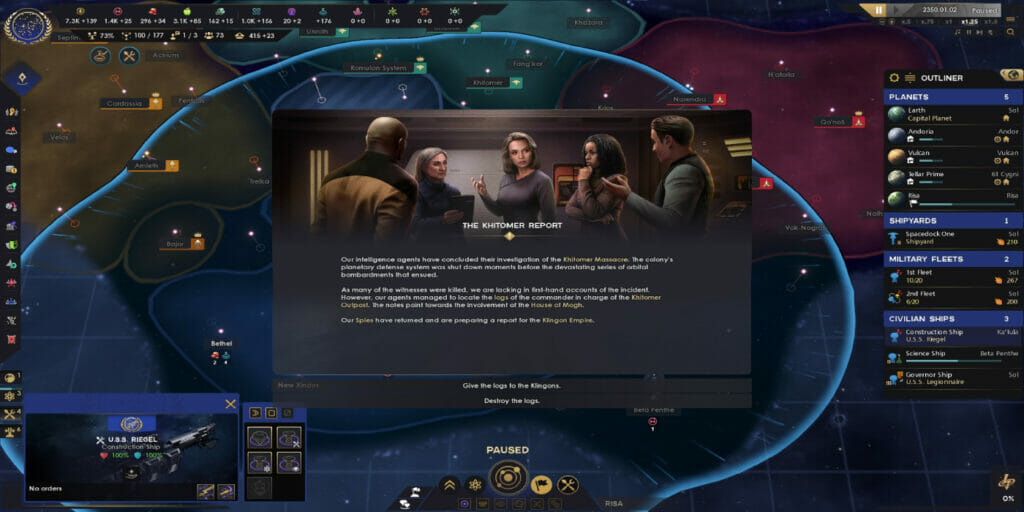
Many people will think that the visual style or sound of a game of this genre is unimportant, but they are. If there is one complaint about Stellaris, it is that the style, while good, needed to stand out. Sure, mods made this possible by adding factions from other media, but it shouldn’t be that way from the launch of any game. Star Trek: Infinite combines everything we know about the franchise, both old and new, and translates it into a video game, making it one of the most fan-serviceable products on the market.
In terms of music, many players sometimes do not pay attention to it as they prefer to play their tracks on another player while managing their empire. This time, though, the developers have included tracks that increase the immersion. Although in many moments everything is silent, when I entered combat, I loved listening to those tracks that increased the tension when I saw my fleet being obliterated.
Related:
The Alters Hands-Off Impressions: What If?
Conclusion: Your Star Trek Story
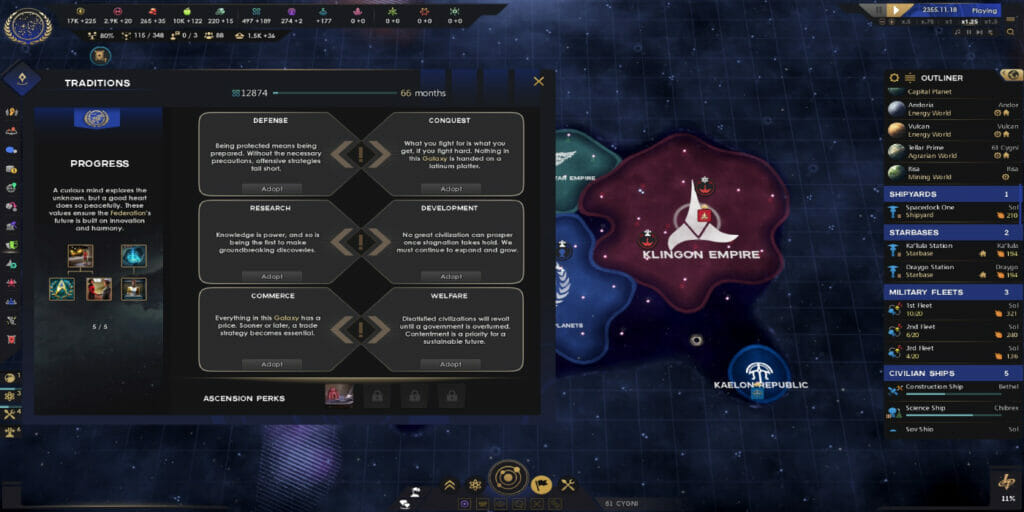
Star Trek: Infinite was a fantastic game that I’m going to come back to after my review. Having such a prominent franchise makes this title that much more enjoyable. While the developers have gone for a special, well-known series to appeal to the audience, they don’t simplify things for players new to the genre.
The tutorial, while useful, lacks a lot of explanation, and when it’s over, you’re free to roam the galaxy, not knowing what else to do. Some systems, although necessary, are too complicated or have more steps than necessary, making the process tedious. This will affect new and veteran players. But it pays to be patient. Those who make it past these bumps will find it one of the best games of the genre and the best Star Trek game we’ve had in years.
Star Trek: Infinite is available now on PC (Reviewed) and Mac.
Review copy provided by Publisher.
Star Trek: Infinite
Star Trek: Infinite is a great strategic game that gets fun after learning its sometimes cluttered systems.
Pros
- A great take on a classic franchise.
- Nostalgia-filled campaigns.
- Player-driven missions.
Cons
- The tutorial lacks depth and can confuse newcomers.
- Many systems can feel out of place or tedious.

